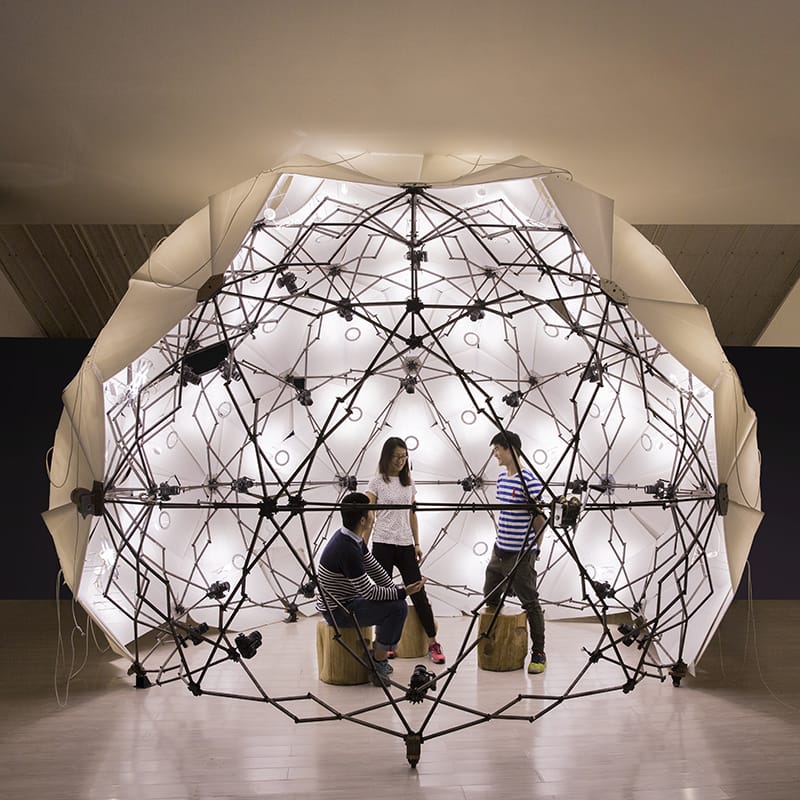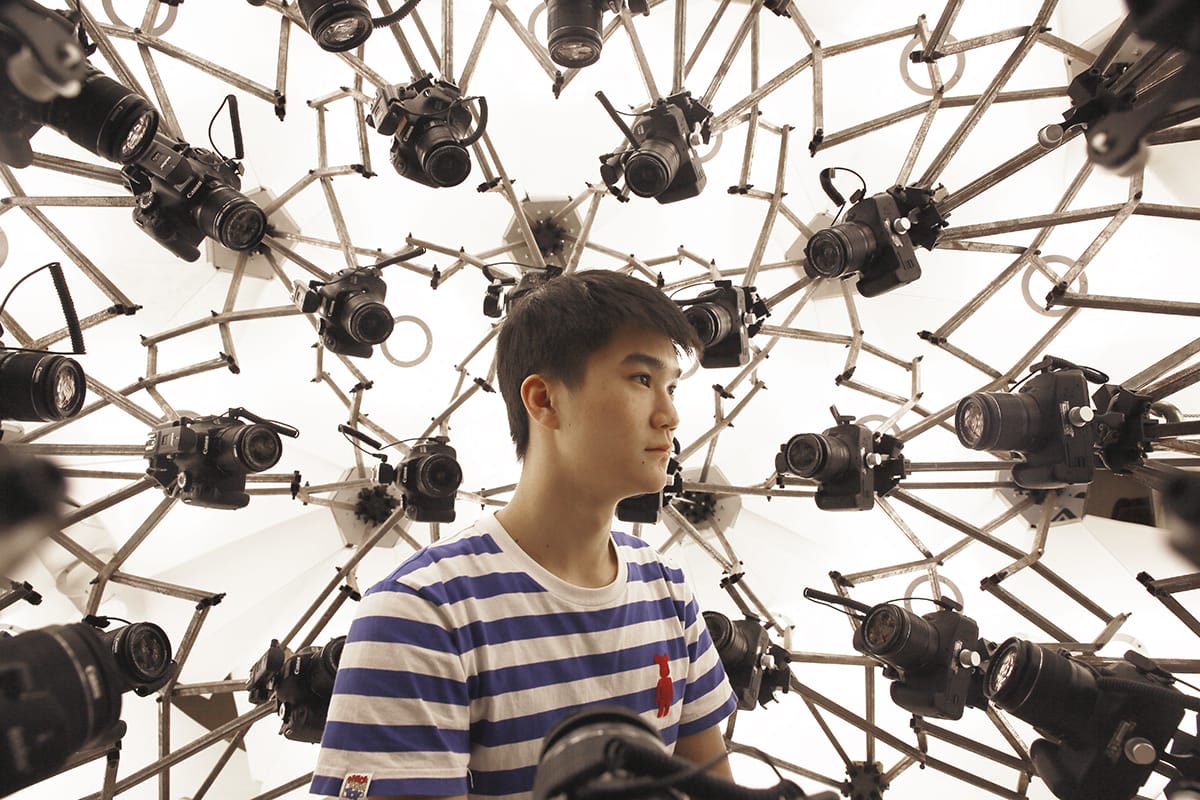
There have been a number of full-body 3D scanners on the market, but none, as far as I know, have included the ability to resize, until now.
The CopyPod is a conceptual design for an optical-based instantaneous 3D scanning system by the People’s Industrial Design Office in Beijing, a center focused on developing architectural and product designs that fit within existing environments.
The CopyPod uses the well-understood optical 3D scanning approach, where a subject is reconstructed in a 3D model by analysis of numerous images taken from all directions.
Some optical systems involves a video or still images taken from a single camera moved to different viewpoints, while other optical systems involve using multiple cameras, often simultaneously. The latter has the advantage of not depending on the subject to remain motionless during capture.
The CopyPod is essentially a structure on which to hang these cameras, which in their case are DSLRs, numbering around 100.

The structure is a variation of a geodesic dome, with the advantage of being expanded or contracted. At top you can see a rather large space suitable for holding several individuals. Pido Pro explains:
Objects are surrounded by a spherical array of over one hundred fixed focal length DSLR cameras. Each camera is attached to a node of the Hoberman-inspired, isokinetic structure. With minimal adjustment, the 3D Copypod can contract to scan small objects and expand large enough to scan a group of people. Folding panels that are lit from the interior enclose the structure of the 3d Copypod to ensure a shadowless photography environment.
Here you can see a collapsed deployment of the CopyPod, where a single person can only sit within the scanned space. The smaller space allows for higher resolution of the subject, as more image pixels are applied to a smaller physical volume.

The exterior skin of the CopyPod provides a number of functions, including ensuring equal illumination of the subject on all sides, a critical factor in optical scanning, particularly for color texture capture.
The skin also provides a uniform background that can be leveraged by the processing software. The software will examine the backgrounds of each still image to see how the pattern moves. This pattern is easily provided by the contrasted color spars of the CopyPod.
It’s not clear whether the CopyPod is a product for sale, or merely a concept. If it were a salable item, I would expect a rather large price, simply because of the optics: 100 DSLRs is going to be expensive, no matter what any of the other components costs. I’d say this unit would be worth well over USD$100,000 if sold.

